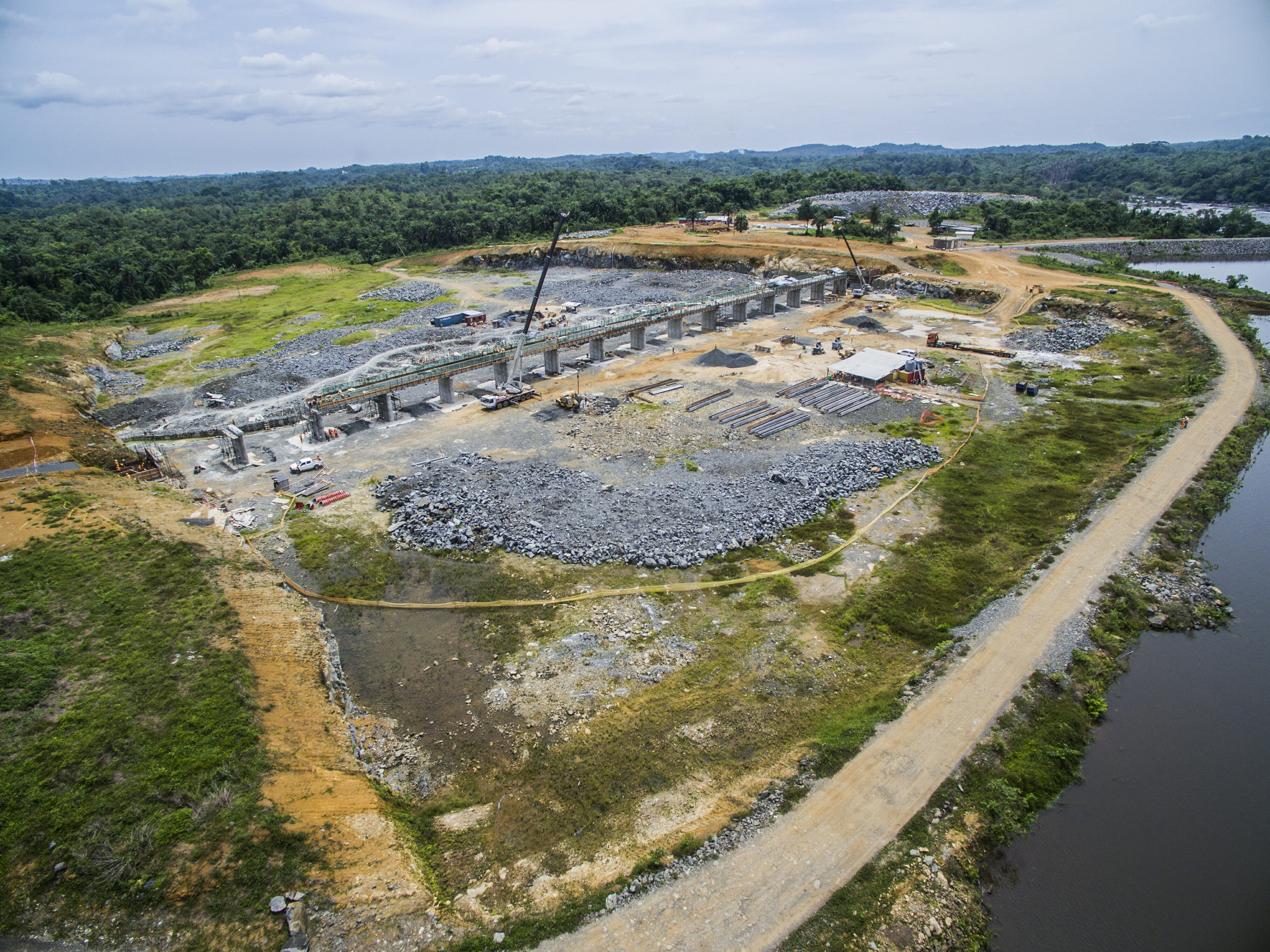Project Description
About Project
PROJECT NAME
Mount Coffee Hydro Rehabilitation Project
CLIENT
LEC (Liberia Electricity Corporation)
Project Start and Finish Date
1 Sept 2017 – 30 June 2018
BUDGET
R78 850 000
Contracts Manager
Deon Henn
Project Manager/Site Agent
Gert van Zyl
Description of Project
220m Concrete Bridge and 250m RMC Weir for Emergency Spillway
General Information
RMC Weir: Teichmann Structures made history by building Liberia’s longest RMC structure to date. Comprising of three arches, each over 70m long, the 2.5m high, 5.5m wide 250m long Rubble Masonry Concrete Weir is the longest Rubble Masonry Concrete structure in Liberia and probably West Africa to date. It was built as part of the Mount Coffee Rehabilitation Project intended to maximize labour-intensive methods of construction to assist towards alleviating poverty and promote upliftment of the local people in the post-war Liberia recovery process.
220m Concrete Bridge: Teichmann Structures once again successfully combined a hybrid construction system of merging precast elements with insitu concrete to reduce construction duration for major civil structures. TS manufactured and installed 112No 14m long precast beams and combined it with 15No 6m high Insitu Piers, 2 abutments and 16 deck spans together with other elements such as sidewalks, handrailing, lighting and drainage, to construct a 220m long concrete bridge in just 6 months.
The benefits of using precast construction integration were:
- faster and less disruptive manufacture and installation,
- eliminated temporary support equipment,
- allowing early follow-on construction work,
- yielding superior productivity,
- yielding superior quality,
- improving mobility and access for larger construction equipment underneath construction work
- reduced wastage factors,
- improving safety on site.
Precast U-Beams: The 112 No 14m length U-shaped beams were manufactured at a production rate of 2 per day. The mix design achieved 70% (32MPa) of the required strength in 2 days allowing installation on the 3rd day. Seven beams were installed per span on top of the piers, seated on bearing pads and were simply bolted together with 420No 25mm bolts during installation. After the beams were secured in position, they were collectively filled with 2nd stage rebar and concrete followed by a 3rd stage reinforced concrete slab complete with sidewalks.
Piers: Peri Trio Formwork were combined with customized rolled steel shutters and site manufactured carpentry to form and cast the 28m3, 6m high and 5.6m wide pier in a single cast. This custom design formwork and method of construction allowed the team to produce 1 pier per 3 days in the peak production period.
Abutments: These two major structures were mostly formed and casted with custom design and built all carpentry formwork with concrete lifts varying from 2.5 to 3.5m high taking 32-54m3 concrete per lift.
Concrete: Being remote Africa most concrete was “hand-batched” using an array of 350-500l Concrete mixers (7 in total). Two Car-mixers were procured to site which assisted in completing the last part of the Project and contributed towards mitigating recovery in the schedule.
Challenged by a major storm in Durban port disrupting and delaying critical materials procurement logistics with up to three months, Liberia tropical rains, heat and humidity ranging between 87-95%, the Construction team were left with the unlikely task to construct the remaining 55% of the bridge in the remaining 60 days which is the equivalent of constructing a 120m long bridge complete with two abutments from scratch in 60 days. By utilizing all of the above techniques combined with a lot of old school expertise, the figurative blood, sweat and tears and persistence, the TS Liberia team managed to not only claw back the three-month delay, but complete the concrete for the bridge construction 10 days ahead of the baseline time schedule whilst maintaining a safety record of over 400 000 LTI and DI Free hours.
In their ongoing quest to uplift and reinvest in local communities, TS Liberia has employed over 330 local labour from 31 surrounding villages and spend over 50% of Revenue to date (April 2018) on Liberia owned businesses and local labour wages. An intensive pre-start IR relations effort which involved all stakeholders like TSL (TS Liberia), LEC, Chiefs from surrounding villages, various CLO’s and the communities were made to ensure a smooth engagement and disengagement process as well as benefit for all. IR relation were kept smooth by monthly IR meetings with all stakeholders.


















